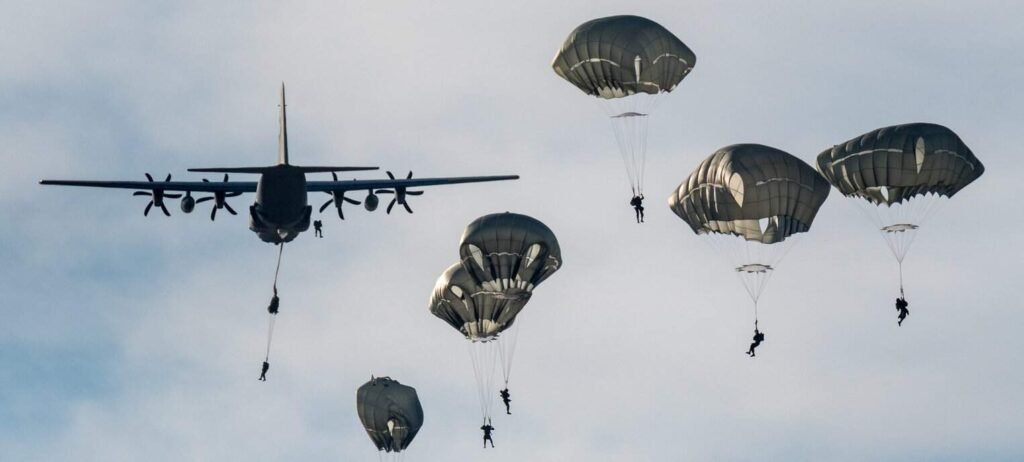
Source: iStock
Mil spec paracord, also known as parachute cord and braided rope, has a long history of use in the military. Today, this lightweight nylon rope has expanded its use beyond the military to personal and commercial uses as well.
In this article, we’ll explore the interesting history and applications of paracord in different military branches. We’ll also talk about where to buy it, especially if you plan to sell it.
Paracord has a range of applications, not just within the military. Learn more about it here.
The Military Origins of Paracord and Early Applications
Paracords that meet military specifications are made of 100 percent nylon (both the outer sheath and inner core strands). Commercial paracord, on the other hand, is usually a mixture of nylon and/or polyester.
There’s a reason why paracords are also called parachute cords. During World War II, American paratroopers used quality paracord as parachute suspension lines (or ropes), which connect the canopy and harness of a parachute.
Once paratroopers landed, they would cut these cords from their parachute. Then, they would use them later for all types of applications, such as lacing their combat boots and erecting emergency shelters. Even after they’re no longer used as suspension lines, the military—and even civilians—still use them as an all-purpose utility cord.
Here are some key uses of paracord during this period and in future conflicts:
1. Deployment of Paratroopers:
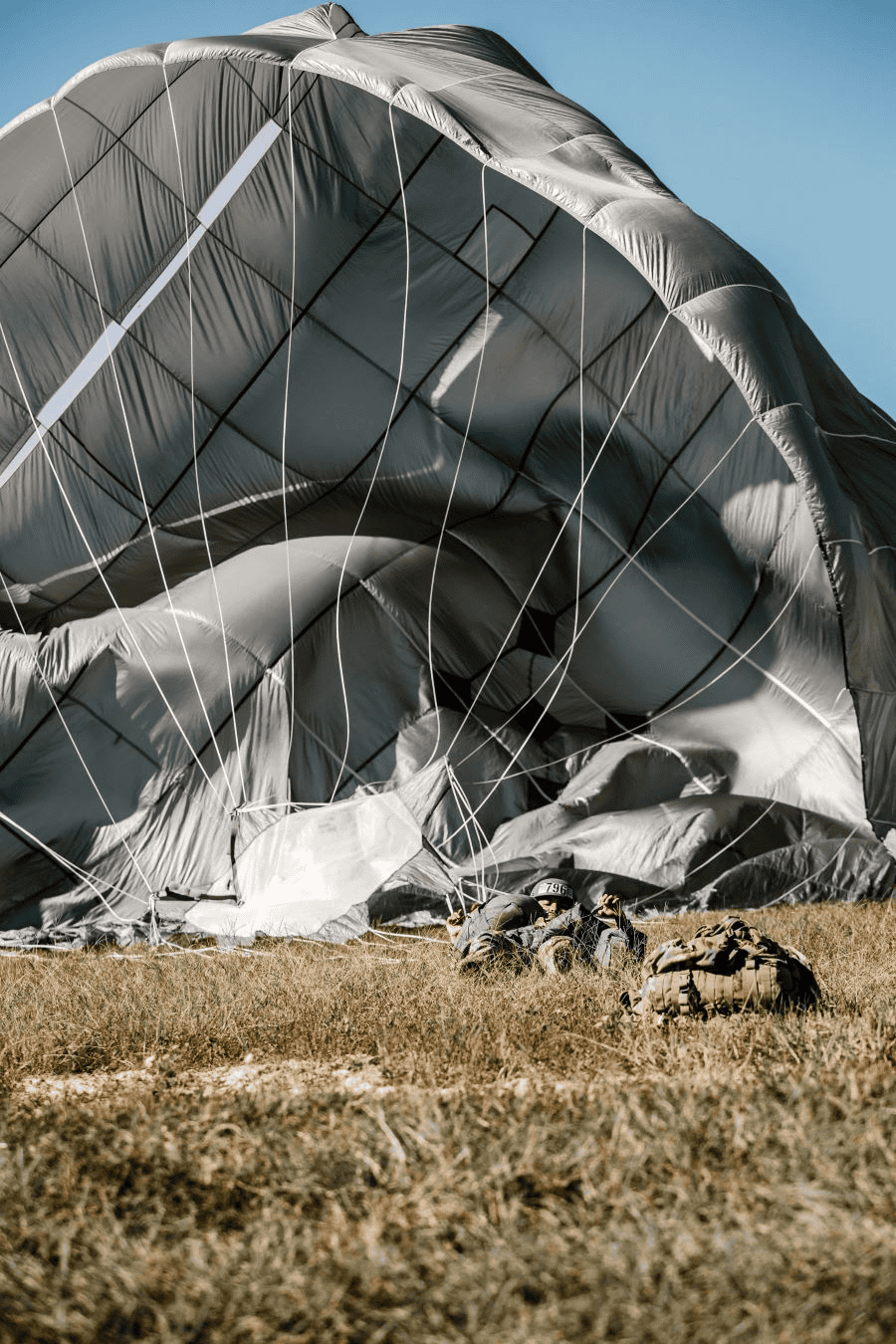
Source: Pexels
As we mentioned earlier, paratroopers heavily depended on paracord suspension lines to help them effectively control their descent during airborne operations. It was only around the late 1990s that the military stopped using paracord for this purpose.
Paracord was replaced with newer materials, such as Kevlar and Technora synthetic fibers. These newer materials have a higher tensile strength, which makes them more suitable for modern military heavy-duty applications.
2. Emergency Repairs:
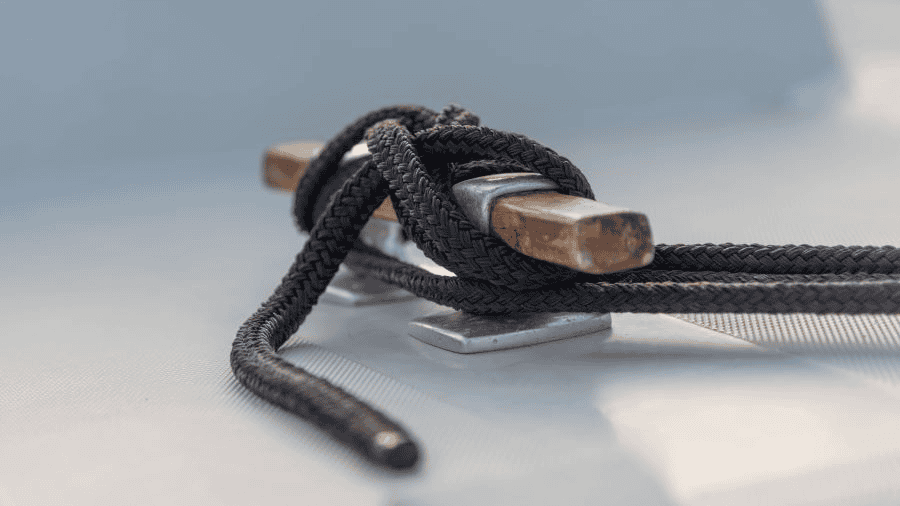
Source: Pexels
There are different ways soldiers can use mil-spec 550 paracord for emergency repairs on the battlefield. For instance, they can use it to securely hold military equipment or their gear in place if the straps are damaged. Or, if they lose the poles or straps of their tent or portable shelter, they can use paracord to secure the structure.
3. Emergency Medical Care:

Source: Pexels
When soldiers are on the battlefield, they might not receive immediate medical care to save their lives. Fortunately, they can use paracord as a first-aid tool.
Paracord can be a tourniquet to stop severe bleeding. It can also function as a sling for a fractured arm. In some cases, soldiers use paracord to make a splint to prevent further injury to broken bones and to reduce pain.
4. Camouflage and Concealment:
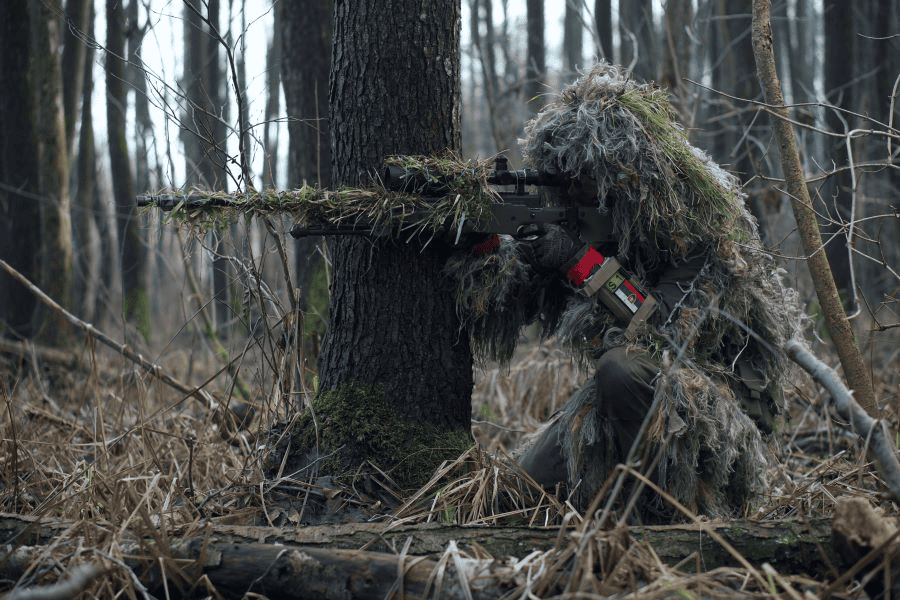
Source: Pexels
Paracord proves to be a useful tool for concealing soldiers to prevent enemy detection. There are different ways soldiers can do that. For instance, they might use high-quality paracord to attach grass, leaves, and/or twigs to their ghillie camo. They might also use it to secure their camouflage tarps, so that they or their equipment stay hidden from the enemy.
5. Equipment Recovery:
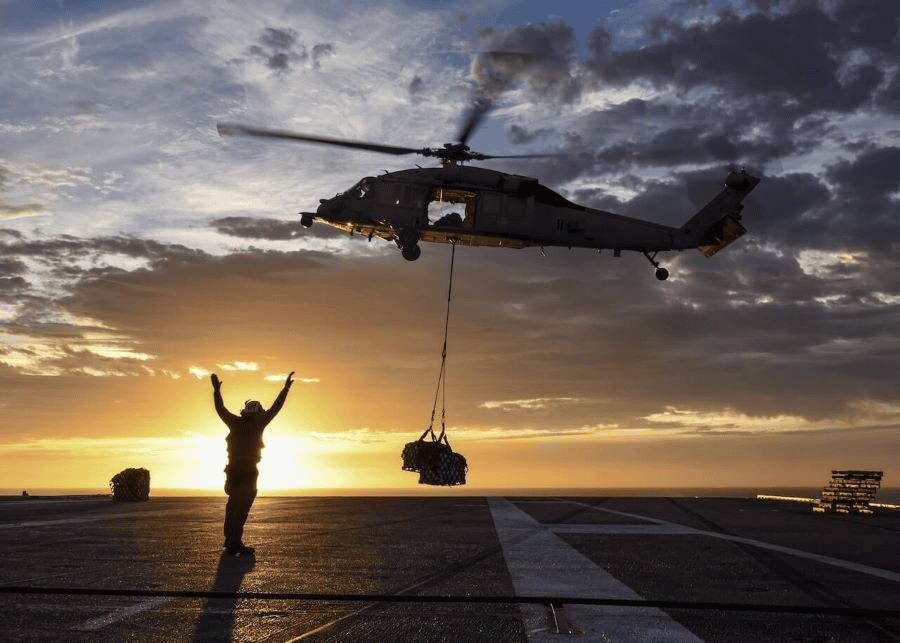
Source: Pexels
When soldiers need to retrieve important equipment that has fallen into inaccessible places, they can make a makeshift rope out of paracord to pull it back to a safer location. Soldiers can also make paracord leashes to ensure that they can easily retrieve their equipment if it slips from their hands.
6. Survival Tool:
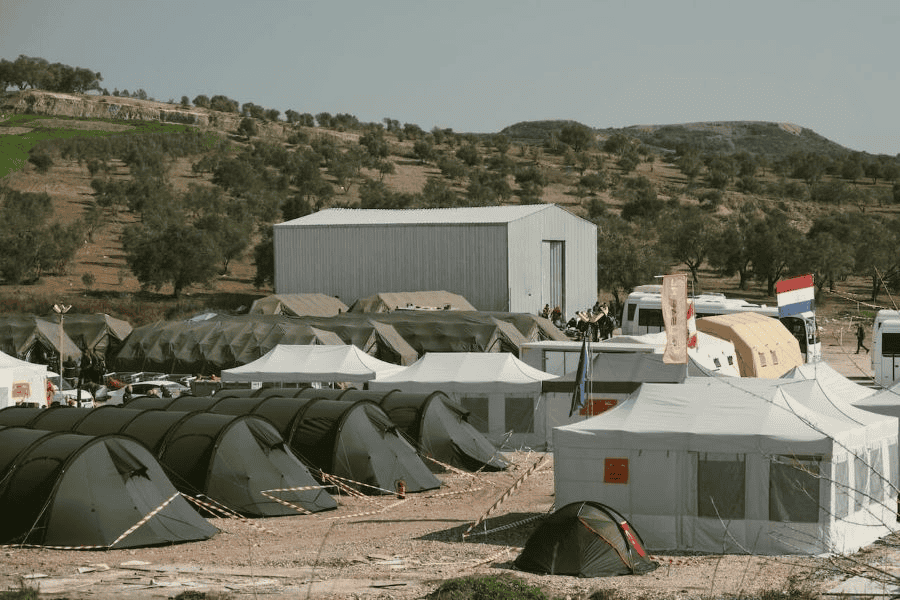
Source: Pexels
The inner core of 550 paracord consists of several strands, also known as the “guts.” You can untangle these high-strength strands, so you can use them for different applications and purposes, such as creating fishing lines, holding together an improvised shelter, and making small game traps. Some paracord products include a strand that helps start fires easily.
Read the full history and uses of paracord here.
Benefits and Limitations of Paracord in a Military Operation
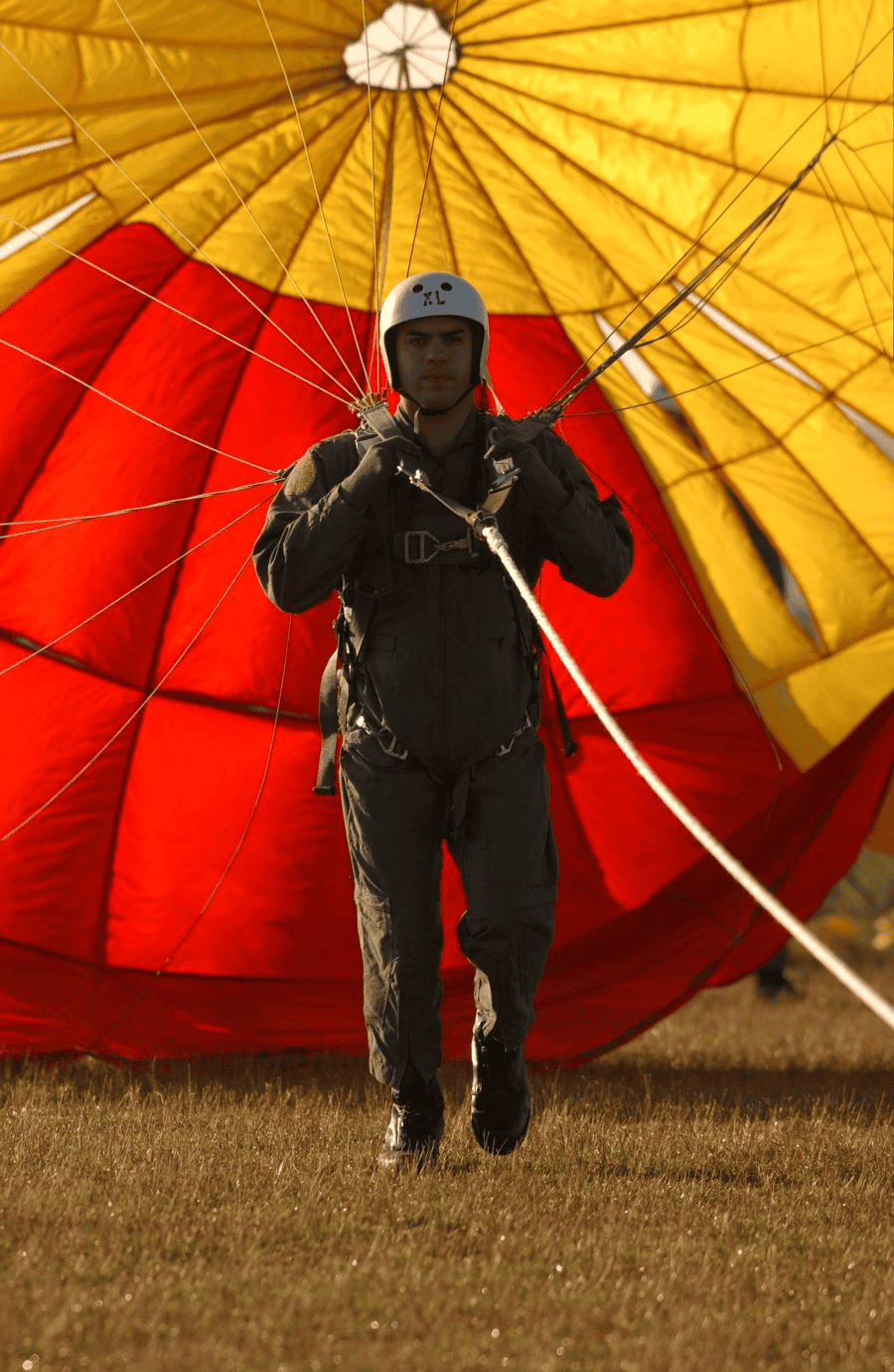
Source: Pexels
Benefits of paracord in military operations:
1. Strength and Durability
The paracord soldiers use isn’t the same as commercial paracord products. They need to meet the strict requirements set by the USA military. Mil-spec paracord is usually divided into six categories, each with a different minimum strength-to-weight ratio capability:
- Type I: 95 lbs (43 kg)
- Type IA: 100 lbs (45 kg)
- Type II: 400 lbs (180 kg)
- Type IIA: 225 lbs (102 kg)
- Type III: 550 lbs (250 kg)
- Type IV: 750 lbs (340 kg)
2. Range of Uses
The US military no longer uses paracord for modern square parachutes. However, its versatility makes it an indispensable tool in various military operations. Today, paracord is used in the military for:
- Field emergency repairs of equipment, gear, clothes, and shelters
- Emergency and survival situations
- Creating camouflage screens, structures, and nets
- Constructing or securing improvised shelters and tents
- Securing equipment and gear to air and land vehicles to prevent damage or loss
3. Accessible
It’s not difficult to find and buy good-quality paracord. You can easily buy it from camping retail stores online, B2B e-commerce platforms, and the manufacturer’s website. It’s usually affordable, which ensures soldiers have access to it without straining military budgets.
Limitations of paracord in military operations:
1. Weight-Bearing Limitations
While it’s suitable for many heavy-duty applications, paracord has its limitations. The paracord used by the U.S. Military is the “Genuine MIL-C-5040 Type III Parachute Cord,” which has a tensile strength of 550 pounds. This means it can withstand a maximum static load of 550 pounds before it breaks.
Note: The maximum weight a paracord can carry or pull depends on different factors, such as the thickness of the cord, the material used, and the construction and weaving patterns.
2. Limited Heat Resistance
Paracord is usually made of nylon, which isn’t naturally fire-resistant. Nylon can burn or melt if exposed to temperatures ranging between 374°F (190°C) and 480°F (250°C). If this happens, it could compromise the strength and integrity of the paracord.
Where Can You Buy Mil Spec Paracord?

Source: Pexels
The great thing about paracord is that it’s typically affordable and easy to access. Here are a few common places where you can buy paracord:
1. Army Surplus Shops
Most army surplus shops get the goods they sell from the US military, which disposes of them if they no longer need them. Therefore, you can be assured that the paracord you’re buying meets the required military specifications.
2. Camping and Outdoor Physical Shops
If there’s no army surplus shop near you, physical retail shops for outdoor and camping gear are great alternatives. These stores will most likely have a wide range of mil-spec paracord, ropes, and cords in different colors and lengths on stock.
3. E-commerce Platforms
Shopping online is probably one of the most convenient ways to buy anything these days, including paracord. Some of the best e-commerce platforms out there are Alibaba, Amazon, eBay, Made-in-China, and more.
4. Manufacturer Websites
Sometimes, buying directly from the manufacturer is a better idea because of several reasons: better pricing, easier warranty claims, and more reliable lead times. And if you own a camping and outdoor shop, you might want to consider sourcing paracord from manufacturers in China.
We know you might feel hesitant to buy paracord in bulk from manufacturers in China. And, honestly, we don’t blame you. There are a lot of misconceptions about China-made products.
If you’re open to suggestions for a reliable paracord manufacturer, we have one for you.
Paracord Manufacturer: Baiyuheng Outdoor
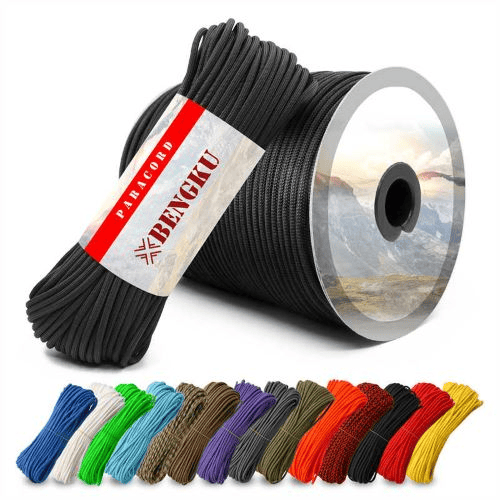
Source: Baiyuheng Outdoor
Company Introduction
Baiyuheng Outdoor is a professional manufacturer of outdoor and survival products, such as 550 paracord, reflective paracord, ferro rods, survival cards, and more. They have a large production facility in Jiangmen, Guangdong Province, China. They’ve been in business for more than a decade and have catered to customers in different parts of the world.
Best Paracord Product
Baiyuheng Outdoor offers a variety of paracord products to their customers, one of which is made from a combination of nylon and polyester. The Bengku 550 paracord is 4 millimeters (around 5/32 inches) thick, with an inner core consisting of seven strands. This paracord is great for camping, hiking, and certain heavy-duty applications.
Why Baiyuheng Outdoor?
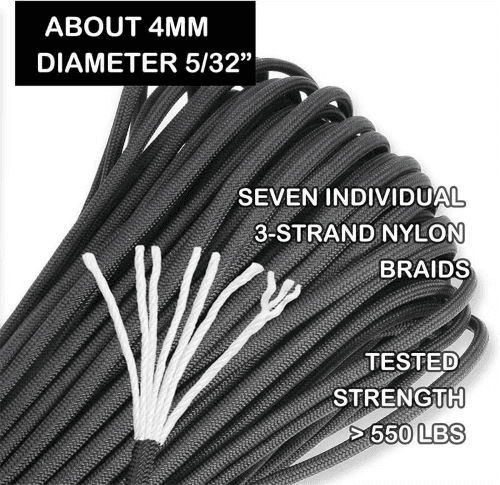
Source: Baiyuheng Outdoor
Low Minimum Order Quantity (MOQ)
You don’t need to order thousands of pieces of paracord if your budget doesn’t permit it. Depending on the type of paracord you want to buy, Baiyuheng Outdoor has a minimum order quantity of one to ten pieces, or 11 to 1,000 meters.
Shipping Options and Fast Delivery
On Alibaba.com, Baiyuheng Outdoor has a 98.1 percent on-time delivery rate. That says a lot about their commitment to shipping orders on schedule. What’s more, they offer door-to-door delivery to significantly reduce transit time.
Extra Services
Before you place a large order with them, Baiyuheng Outdoor can send you samples of their paracord to make sure it meets your specifications. They can also send photos of the paracord you ordered, which you can use for your business website.
What’s even better? All of the services we just mentioned are available to you free of charge.
Customer Support
And lastly, Baiyuheng Outdoor has great customer service. If you have questions or concerns, you can call them at 867506312068 or email them at support@byhoutdoor.com.
If you’re interested in importing paracord from China to the USA, make sure to read our helpful guide to avoid making costly mistakes.
Conclusion
So, does the military use paracord? Definitely!
The US military no longer uses it as parachute suspension lines, but they still use it in a wide range of applications—emergency repairs, setting up camouflage nets, securing equipment and gear, and more.
The great thing about paracord is that it’s accessible and affordable. You can buy it anywhere, but if you need a reliable manufacturer in China, Baiyuheng Outdoor is worth considering.

